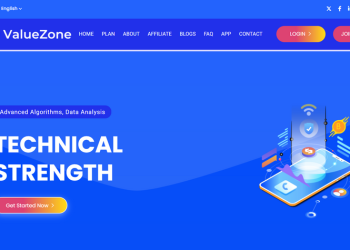Remember when suddenly every crypto celebrity and influencer with a name and rank started buying emoji domains? It feels like ages ago, but it must’ve been earlier this year when people began adding y.at addresses to their Twitter bios. The exchange I worked at back then also secured one. I bet it was expensive, as it featured the same key emoji thrice. If you wonder what range we’re talking about, on the high-end y.ats sold for more than $400,000.
As with all new things on the block, I was intrigued, but I also couldn’t find an emoji combination that represented me and was affordable. A few months later, I’m glad I didn’t follow that fad. I realized you could buy emoji domains that aren’t as expensive as well.
And then came more and more people on Twitter with .eth in their names, and the news of Heineken buying Beer.eth. 🍺As a German, it makes me a little sad that it wasn’t one of our breweries buying it.
The first thing I did after that news broke was, searching how much other beverage ENS addresses would cost.
Water being less expensive than coke indeed is good news for Nestle, but so far, they haven’t bought it.
But let’s take a step back. What are these ENS domains anyway, and why would people (& companies) buy them?
Let’s talk about domains first.
Suppose you’re a tech-enthusiast (aka not much clue of reading backend code or of IT networking infrastructure) like me. In that case, you might never really think about how it’s possible that we can google stuff and be shown things in a human-readable manner.
When going to a website, all we do is enter its domain name in our browser, and voila. But in the backend, the Domain Name System is hard at work.
What is DNS?
The internet is nothing but a network of computers. Any device that connects to it gets a unique IP address similar to the address you live in that enables others to find you. With the difference that street names can be used frequently across cities, whereas IP addresses are genuinely unique. More like NFTs.
Random fact: The most commonly used street names in Germany are Hauptsrasse (main road), Schulstrasse (school street), Gartenstrasse (garden street), and Bahnhofstrasse (road to the train station).
You’d have to remember an IP address and enter it to connect to a website in the early days. Intelligent developers came up with domain names to make the internet more usable and help people find what they’re looking for.
DNS connects human-readable addresses such as google.com with the IP of the servers they’re hosted on, like: 172.217.0.0.
The process when you enter an address is somewhat along these lines:
- Type address, system checks if you’ve visited the site previously, and if yes, the records are in your cache, so the following steps are skipped, and you’re forwarded immediately
- If you visit for the first time or always clean your cache, the address is sent to your local DNS server (usually by your internet provider). Suppose the local DNS server has the records, excellent. You get to your site.
- If it doesn’t, you’re forwarded to the root nameserver. These store DNS data worldwide.
- As soon as located, you’re connected, and the website opens. The whole process takes seconds.
Do the addresses being hard to remember for humans sound like a familiar problem? If yes, you might be the proud owner of one or multiple crypto wallets. And you’re not alone.
Ethereum alone hosts nearly 175 million unique addresses. And if the current price movements continue, the 175 might be surpassed soon. Even if not all of them are different people, it still leaves us with a significant number of people facing challenges remembering and confirming their address.
After a few uses, I suspect that more savvy crypto-users tend not to check the full address anymore, but just the first four and last four characters. Or they’re just adapting YOLO more.
Luckily with ENS addresses, sharing and receiving crypto gets a lot easier.
What is ENS?
ENS is the Ethereum equivalent of DNS, the Ethereum Name service. Like DNS, ENS connects difficult to remember and read wallet addresses with simple, readable names.
Initially, you might have wondered why I talk so long about DNS, but hey, didn’t it make it a lot easier to grasp what ENS does? It just took me two sentences 😉
But unlike the centralized domain name system, an eth address can be a lot more than just a place to host a website. It can turn into your wallet, your bank account, your ID (talk about decentralized ID, and doing stuff in DeFi), and of course, also point to all kinds of records you want to point people to.
The best way to learn is trial-error, so let’s get an ENS domain.
How to get an ENS (.eth) address
Join the Heinekens of this world. If you have been in crypto for a bit, you will find it very easy to get your .eth address.
First, visit ens. domains, and then launch the app (I find that a bit counterintuitive, that you can’t directly use their website, but that’s crypto). Now look for the name you want. Popular names will often be taken, so have a registrant already.
If it’s taken, but you’re eager and ready to pay, then your next best bet is heading to opensea and checking for the address. All ENS domains are registered as ERC-721 standard (NFT token standard), making them tradeable on nft marketplaces.
A search for yourname.eth on opensea delivers the following result:
For just 5 ETH, it’s yours. Congrats. I suspect the high price could also be related to the eponymous anime.
If the name you’re looking at is available, you can register it. Note that you’ll never be listed as “owner” on ENS.domains, as you effectively lease out the address.
Registering a domain is cheap; gas fees are not, so if it’s a domain you want to keep for decades to come, it might be sensible to pay for all of them at once. Here is an example:
To register, connect your wallet — the website will ping you to do so if you haven’t already when you click to register.
Your wallet will open and require you to confirm the first of two transactions. Once verified, there is a 1 min waiting period to ensure no other person tries to register the name simultaneously. After that, your wallet will re-open, and you can confirm the second transaction to finalize your domain registration.
Et voila, you own your first .eth address and join a community of more than 145,000 ENS domain owners. 🎊
To make it work to receive crypto, head to your address on the ens app and click on add/edit records. You can freely add various cryptocurrency wallet addresses to your ENS domain. ENS supports ETH, BTC, Doge, LTC, Atom, Dash and 40 other wallet addresses.
You can also add an avatar, a link to a text file, your Twitter account, and many other records to your .eth address. Ideally, you add all of them at once because of gas.
Yes, for every record you add, you have to pay gas. On that note, I once bought ETH straight with Fiat to my Meta Mask wallet because it was cheaper than transferring ETH from any of my other accounts. The Future of France ( This is a crypto insider joke because someone said on live TV speaking about DeFi that it was the Futur of France instead of Finance. GoodGhosting, a DeFi project, even made an NFT based on that).



















